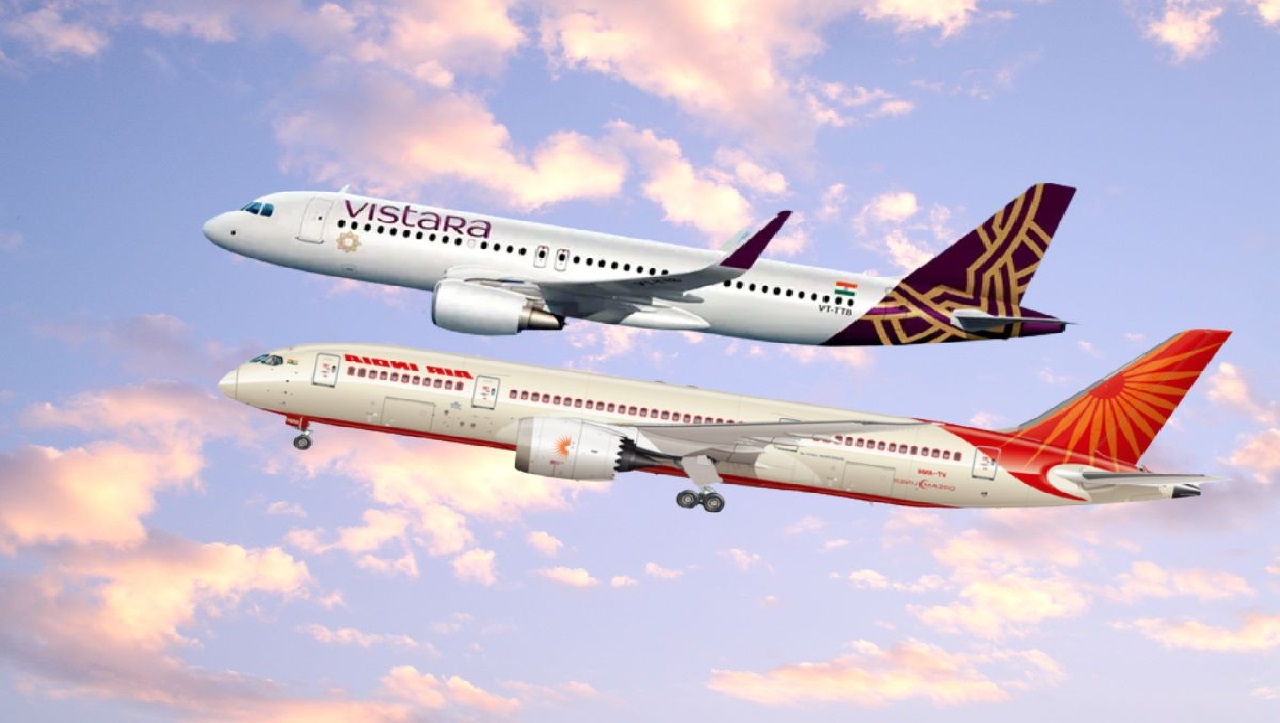The Journey of Indian Aviation and Vistara’s Role
India’s aviation industry has seen a remarkable journey, evolving from a small and state-dominated sector into one of the fastest-growing markets globally. For decades, full-service airlines like Air India, Kingfisher, and Jet Airways dominated the skies, offering premium experiences for travellers who could afford them. However, the entry of low-cost carriers, particularly IndiGo, disrupted the landscape, shifting focus toward affordability and efficiency. In 2015, Vistara entered the scene, positioning itself as a premium alternative with its exceptional service and attention to detail. Today, Vistara bids farewell, merging with Air India under the Tata Group’s strategic consolidation, marking a transformative moment in Indian aviation.
A New Phase: Vistara’s Final Flights and the Transition to Air India
Vistara, a joint venture between Tata Group and Singapore Airlines, operated its final flights on November 12, 2024, ending a brief yet impactful legacy. This merger not only consolidates Tata’s airline assets but also transforms Air India into India’s sole full-service airline, a significant shift in an industry marked by the dominance of budget carriers. Over 115,000 passengers with Vistara bookings post-merger will now transition to Air India, experiencing what the Tata Group hopes will retain the hallmark “Vistara experience” within a revamped Air India brand.
For loyal Vistara customers, help desks at major airports and enhanced customer service initiatives are in place to ease the transition. Tata Group promises a smooth integration with minimal disruption, aiming to maintain high standards in passenger experience while rebranding the entire experience under Air India’s banner.
Tata Group’s Strategic Consolidation: A Vision for a Stronger Full-Service Airline
The Vistara-Air India merger is Tata Group’s latest move in its comprehensive strategy to build a formidable aviation empire. Having acquired Air India in 2021, Tata has worked diligently to enhance the airline’s operations, service quality, and international presence. Consolidating Vistara into Air India is a logical next step, leveraging Vistara’s premium appeal to bolster Air India’s brand. The merger not only strengthens Air India’s fleet and network but also equips it to compete in India’s booming aviation market, where Tata now has a robust presence across domestic and international routes.
The involvement of Singapore Airlines, which retains a 25.1% stake in the merged entity, adds strategic value, bringing expertise in international route management and service enhancement. This collaboration will likely provide Air India with both capital and operational insights necessary to expand its global reach and improve its reputation, setting a new benchmark for full-service travel out of India.
The Rise of Low-Cost Carriers and the Challenges for Full-Service Models
India’s aviation sector has rapidly embraced the low-cost model, with budget airlines now dominating 78.4% of domestic routes. IndiGo, the market leader, has capitalized on affordable fares and efficient service to secure an impressive market share. This shift to budget-friendly travel has placed significant pressure on full-service airlines, challenging them to redefine their offerings. Kingfisher’s collapse in 2012 and Jet Airways’ bankruptcy in 2019 highlighted the difficulties faced by full-service carriers in a market increasingly focused on cost over luxury.
Despite these challenges, Tata Group sees value in the full-service model, especially as India rises to become the world’s third-largest aviation market. This merger reflects Tata’s belief that there is still demand for premium service, albeit packaged with operational efficiency. Air India’s potential to differentiate itself as a high-quality, customer-focused airline may ultimately justify this strategic focus on full-service offerings in an otherwise low-cost-dominated market.
Vistara’s Legacy: Setting a Standard in Premium Indian Aviation
Since its inception, Vistara has set a high standard in Indian aviation with its commitment to service excellence. A pioneer of premium economy class and renowned for its luxurious business class, Vistara cultivated a strong base of loyal customers. Its seamless blend of Indian hospitality with Singapore Airlines’ rigor in service standards made it a popular choice among business and leisure travellers seeking a superior flying experience. Vistara’s entry and success also reflected a shift in India’s aviation policies, particularly the 49% foreign direct investment allowance in domestic carriers, which paved the way for foreign collaborations and raised service standards.
The airline’s journey, though short, has left an indelible mark on the industry. As Tata Group integrates Vistara’s high standards into Air India, it aims to preserve this legacy while adapting to the larger demands of a full-service carrier on both domestic and international fronts.
The Future of Air India: Opportunities and Challenges
The merger with Vistara presents a unique opportunity for Tata Group to reshape Air India as a modern, world-class airline. With an expanded fleet and over 470 aircraft on order, Tata is positioning Air India to compete effectively on both the domestic and international stage. The rebranding of Air India with Vistara’s premium qualities is central to Tata’s vision of building a flagship carrier that can rival global giants.
Yet, significant challenges remain. Air India has long grappled with operational inefficiencies, delays, and service complaints. To succeed, Tata Group must not only retain Vistara’s premium service elements but also implement organizational changes to tackle Air India’s historic issues. Streamlined operations, improved training, and enhanced service protocols will be essential to making Air India a preferred choice among global and domestic travelers alike.
Blurring Lines: The Global Trend in Full-Service and Budget Airline Models
The distinction between full-service and low-cost carriers is gradually narrowing as budget airlines introduce premium options and legacy carriers streamline services. Globally, low-cost carriers are adding business class, priority boarding, and in-flight meals, making the line between service models increasingly blurred. For Tata Group, the challenge will be to differentiate Air India by maintaining its premium edge while adapting to competitive pricing pressures.
The Dawn of a New Era in Indian Aviation
The Vistara-Air India merger symbolizes more than just a consolidation; it marks a new phase in the evolution of Indian aviation. As Tata Group takes on the formidable task of transforming Air India into a flagship full-service carrier, it faces the dual challenge of honouring Vistara’s legacy while modernizing a national icon. For travellers, the merger promises a premium yet efficient experience, one that could redefine air travel standards in India.
This strategic integration underlines Tata’s commitment to Indian aviation’s future, leveraging Vistara’s customer-centric approach with Air India’s extensive network. With Singapore Airlines’ backing, Tata Group is poised to navigate the challenges and establish Air India as a dominant player in global aviation, carrying forth the legacies of both Vistara and Air India into a promising, unified future.
(With inputs from agencies)








